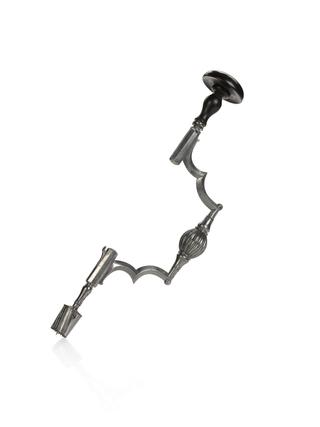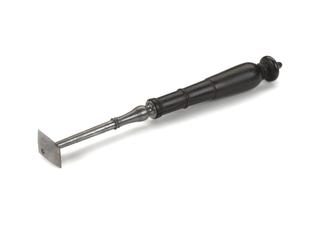
Tourniquet, Petit's type
- maker:
- Weiss, John




Tourniquet, Petit's type, brass screw device, webbing strap and leather pad, manufactured by Weiss, c. 1850
The tourniquet is used to apply pressure to stop heavy bleeding, especially during amputations. John-Louis Petit (1674-1760), a Parisian surgeon, was the first of many to introduce improvements to the tourniquet, which was invented by Ambroise Paré in the 1500s. In 1718, Petit attached a circular bandage to a screw and a leather pad to allow pressure to be focussed on a specific point. It had the advantage of not requiring an assistant to apply constant pressure to the bleeding and became the most commonly used tourniquet throughout the 1800s due to its simple but effective design.
Details
- Category:
- Surgery
- Collection:
- Sir Henry Wellcome's Museum Collection
- Object Number:
- A600728
- Materials:
- incomplete, brass (copper, zinc alloy), steel (metal) and linen webbing
- Measurements:
-
brass screw device: 81 mm x 56 mm x 37 mm,
overall (unrolled): 81 mm x 830 mm x 40 mm, 0.18 kg
- type:
- tourniquet




